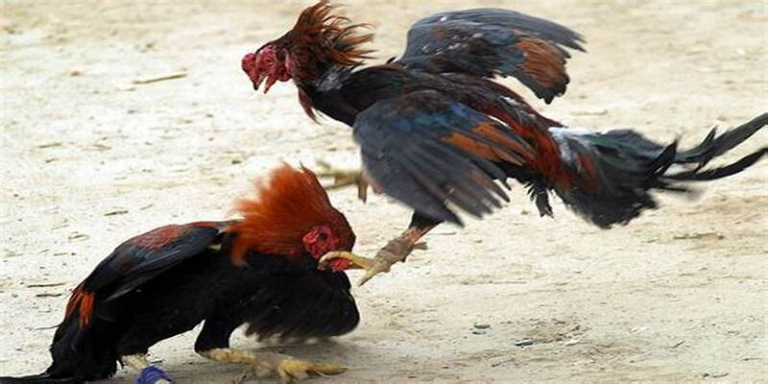Create a Cloud Collector’s Handbook: A Field Guide to Cataloging Skies

Some people collect stamps, others who collect seashells — and then there are the cloud collectors, the folks who spend afternoons with their necks craned and a notebook on their knees, cataloging sky-forms like rare postal issues.
If you want a fast way to make a sky feel like a specimen, drop a screenshot or snapshot into Dreamina’s AI photo generator and produce a weathered index plate: the texture, the tint, the vignette that makes a passing cumulus read as if it were a prized acquisition.
This handbook is for anyone who wants to practice noticing: a playful taxonomy, simple recording rituals, and a few creative ways to present your cloud archive so your everyday sky becomes a curated collection.
What a cloud collector actually collects
Cloud collectors gather more than shapes. They collect context: the hush of a noon street, the smell of rain, the angle of late light. When you catalog a cloud, note the companion details. Where were you standing? What was playing in your ears? Did the air hold ozone or the scent of frying onions? Those quick sensory tags turn a fragmentary photo into an evocative record, a small story attached to a sky-form.
Start with three minimal fields for each entry: form, mood word, and a one-line context. Form might be “feathered cirrus” or “grooved stratocumulus.” A mood word could be “anticipatory” or “dozy.” The context line is the human hook: “Waiting outside a bakery at 8:14 a.m.; someone laughed inside.” This triad keeps your catalog lively without getting bureaucratic.
Naming clouds like a poet (and a scientist)
You can be precise or sly. Use formal terms when you want repeatability: cumulus, nimbostratus, lenticular. But give each specimen a collector’s name too: “The Commuter’s Sail,” “Grandma’s Lace,” or “The Interrupted Tuba.” Names are small spells that anchor memory. They make sharing joyful: give someone a cloud’s name and they’ll picture it, almost touch it.
If you want a playful system, create micro-categories that matter to you: edge (soft, frayed, hard-cut), density (gossamer, pillow, anvil), and behavior (drifting, climbing, boiling). These three attributes produce surprisingly descriptive shorthand when you scan dozens of entries.
Tools of the trade
A cloud collector needs little gear: a phone for quick snaps, a small notebook (or a notes app), and an easy way to tag entries. Consider a simple template: photo, name, date/time, weather note, and a single sentence memory. If you want to make your archive feel like an exhibit, print a handful of plates on matte paper and pin them in sequence by date.
For field practice, try a two-minute ritual: if a cloud stops you mid-step, snap, tag, and say one sentence aloud. Speaking the line aloud links voice to vision and deepens recall. Over time you’ll accumulate a patterned archive — a map of moods and skies across weeks and years.
Arranging your little cabinet of skies
How you present a collection affects how others read it. Arrange plates by theme rather than chronology for surprising juxtapositions: all the “witness clouds” that appeared during important personal moments, or a sequence of dawn skies from different months that together tell a story about changing light.
If you want to take it public, design a small series: three-by-three grids that make an Instagram gallery read like a curated cabinet. In physical spaces, a linear strip of prints invites walking, while a clustered frame emphasizes contrast. Resist the urge to over-label; let a few placards guide the viewer and let most images breathe.
Quick field experiments to get better at noticing
Do short, playful exercises to expand your eye. One exercise is “pairing”: capture two clouds in a week that feel opposite — one agile and one ponderous — and write a 25-word micro-essay connecting them. Another is “re-wind”: revisit a photo a month later and add a second-line note about how the memory changed. These small practices build a more multi-dimensional archive than a mere photo dump.
Try a collaborative game: trade one cloud image with a friend and write a one-line myth about it. The stories you invent in exchange become little folklore that enriches the catalog.
Presenting your skies with a wink
If you want a visual signature for your sky portfolio, a tiny emblem helps tie pages and posts into a series. Use that badge subtly in a corner or on a title card, so viewers immediately recognize the work as part of your collection. If you need quick emblem options to test, Dreamina’s AI logo generator can sketch compact marks that read well at thumbnail sizes; pick one and make it your collector’s sigil.
For printed zines, consider pairing each plate with a miniature “provenance” note: time, location, and the sound that accompanied the sighting. That little context transforms an image into an experience someone else can visit.
Clouds as prompts for other arts
Cloud plates are great seeds for art. Turn a photographed cumulus into a textile pattern, a poem, or a found-sound piece. Use a free AI art generator to produce texture studies or pattern variants from a cloud photo: soft repeats for textiles, higher-contrast studies for linocut mockups, or color-shifted experiments for surreal collages. These generative companions let you spin a single sky into many forms without losing its essence.
For writers, every plate is a prompt: who once lived under this sky? What letter was written that afternoon? For composers, the rhythm of a drifting cloud can suggest tempo marks; for designers, the edge treatment suggests margins and negative space.
Seasonal cataloging and the long game
Cataloging for a season yields rhythms. Summer skies sing of thin heat and late storms; winter skies offer low, layered gray that reads like a slow hymn. Keep a seasonal file and return each year to compare. The long arc of a cloud archive reveals personal weather: the moods you cycle through, the places where clouds seem to gather when you’re thinking about certain things.
Over a decade, you’ll have a small atmospheric biography — a map of days that mattered less about what you did and more about what the sky was doing while you were alive.
Dreamina’s way of creating joy with custom handbooks
Step 1: Generate a text prompt
Go to Dreamina and write a description of a single cloud plate you wish to create as a museum object. For instance: “A tall, feathery cirrus above a late-afternoon urban scene; golden rim-light, gentle film grain, textured paper surface, handwritten title at the bottom.” That description is your artifact’s hero image.
Step 2: Set parameters and generate
Select a model that prefers understated texture, adjust the aspect ratio to the platform you will be publishing on (square for social media, portrait for zines), select size, and choose 1k for fast mockups or 2k for detailed prints. Then click Dreamina’s icon to create a set of plates to curate.
Step 3: Personalize and download
Use Dreamina’s inpaint to adjust sky edges, expand to add horizon context, remove distracting features, and retouch color for an even series palette. Once the plate resembles the specimen you intended to gather, click the Download icon to save a high-resolution file for printing or viewing.
The joy of small archives
Cloud collecting is, at heart, an invitation to slow your headlong life for tiny, airborne moments. It teaches humility — that some of the most moving things are overhead and fleeting — and generosity, because photographs and names can be shared like postcards. Start with one plate, a single line of provenance, and a modest emblem; let Dreamina help you make the first image sing. Over time, you’ll have a pocket-sized museum of skies: a map of moods, a ledger of light, and a small catalog of days you didn’t let slip away.






